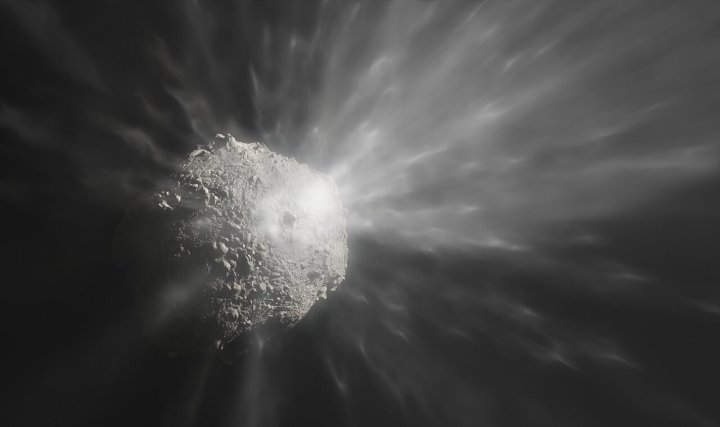When NASA deliberately crashed a spacecraft into an asteroid last year, it wasn’t only a thrilling test of planetary defense. It was also a unique opportunity for scientists to observe an asteroid system and see the effects of the crash, letting them learn more about what asteroids are composed of. Earlier this month, images of the impact captured by the Hubble Space Telescope were released, and now we can see the impact from another view, captured by the European Southern Observatory’s Very Large Telescope (ESO’S VLT).
The Very Large Telescope is a ground-based set of four telescopes located in Chile, which were able to see the aftermath following the DART spacecraft impacting the asteroid Dimorphos. The images show the cloud of debris thrown up by the impact, called the ejecta, between the time just before the impact on 26 September 2022 all the way through to a month later on October 25. Through this time, the cloud developed clumps and spirals and settled into a long tail formed by radiation from the sun.

Studying this ejecta using spectroscopy allowed the researchers to see that the cloud did not contain oxygen or water. “Asteroids are not expected to contain significant amounts of ice, so detecting any trace of water would have been a real surprise,” said one of the researchers, Cyrielle Opitom, in a statement. Another thing the team searched for was propellant from the spacecraft, but they didn’t find that either. “We knew it was a long shot, as the amount of gas that would be left in the tanks from the propulsion system would not be huge,” Opitom said.
Another study looked at how the asteroid changed once the spacecraft impacted it, by looking at the way light bounced off it.
“When we observe the objects in our Solar System, we are looking at the sunlight that is scattered by their surface or by their atmosphere, which becomes partially polarised,” explained researcher Stefano Bagnulo. “Tracking how the polarisation changes with the orientation of the asteroid relative to us and the Sun reveals the structure and composition of its surface.”
The team found increased brightness and changes in polarization which suggests the impact could have scrapped away the asteroid’s dull, outer layers to expose brighter, untouched material beneath. Alternatively, it could be that the impact threw up small particles of debris rather than larger ones, which could also explain why they reflected more light.
Finally, the European Southern Observatory brought together data from the various studies along with images taken from the spacecraft’s camera before it crashed to create this glorious artist’s impression of the moment the spacecraft collided with the asteroid.

The research is published in two papers in Astronomy & Astrophysics and The Astrophysical Journal Letters.



